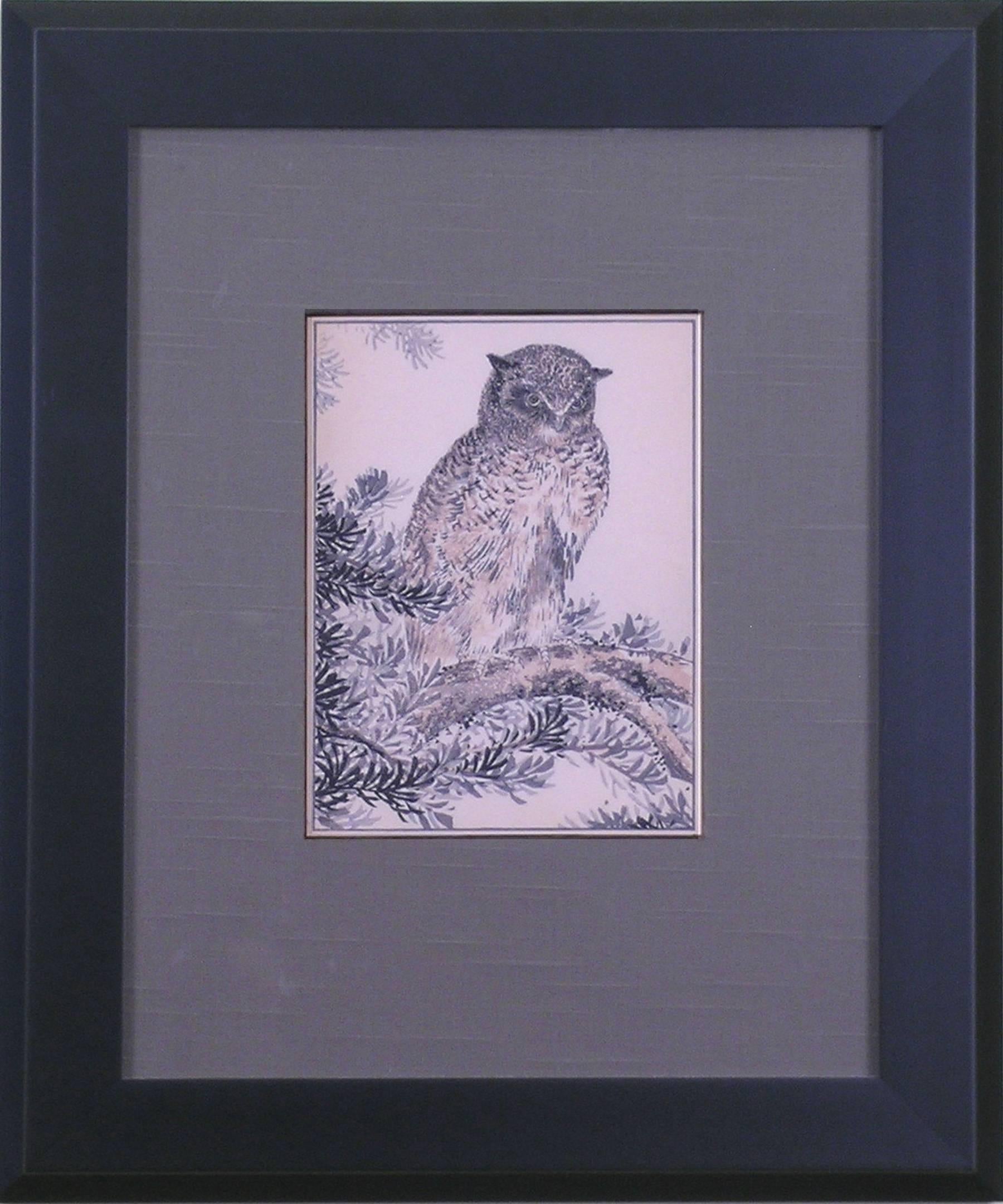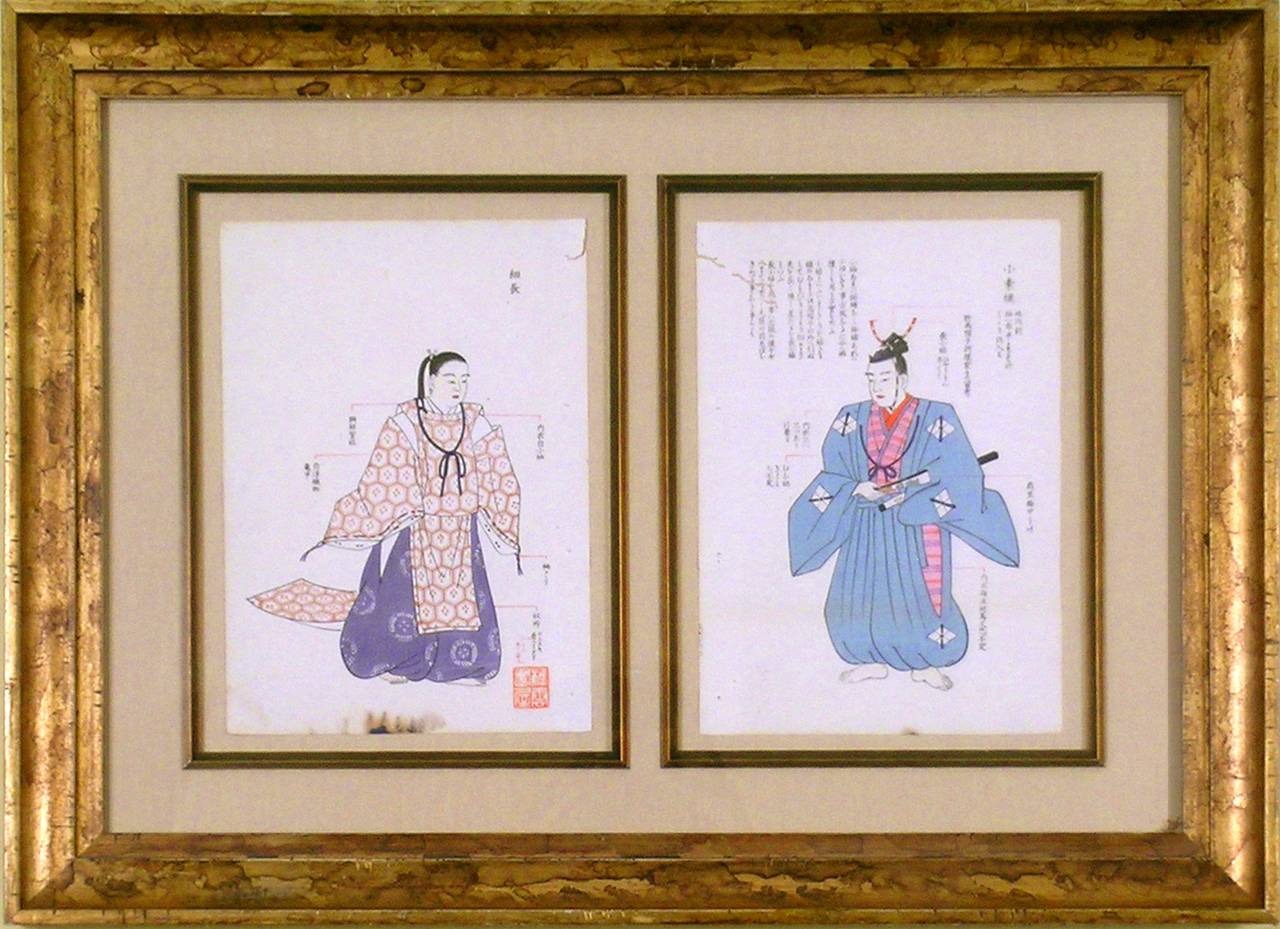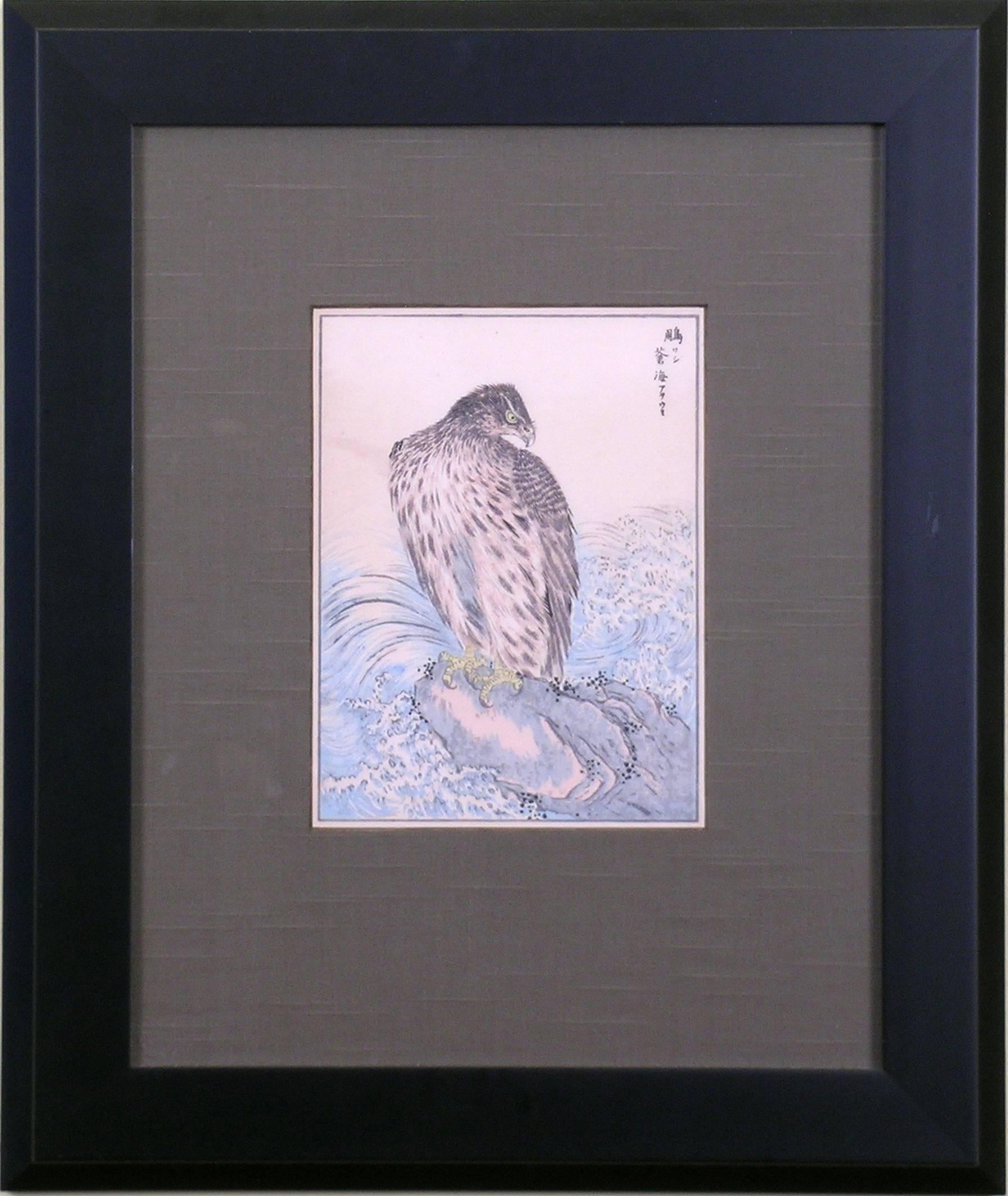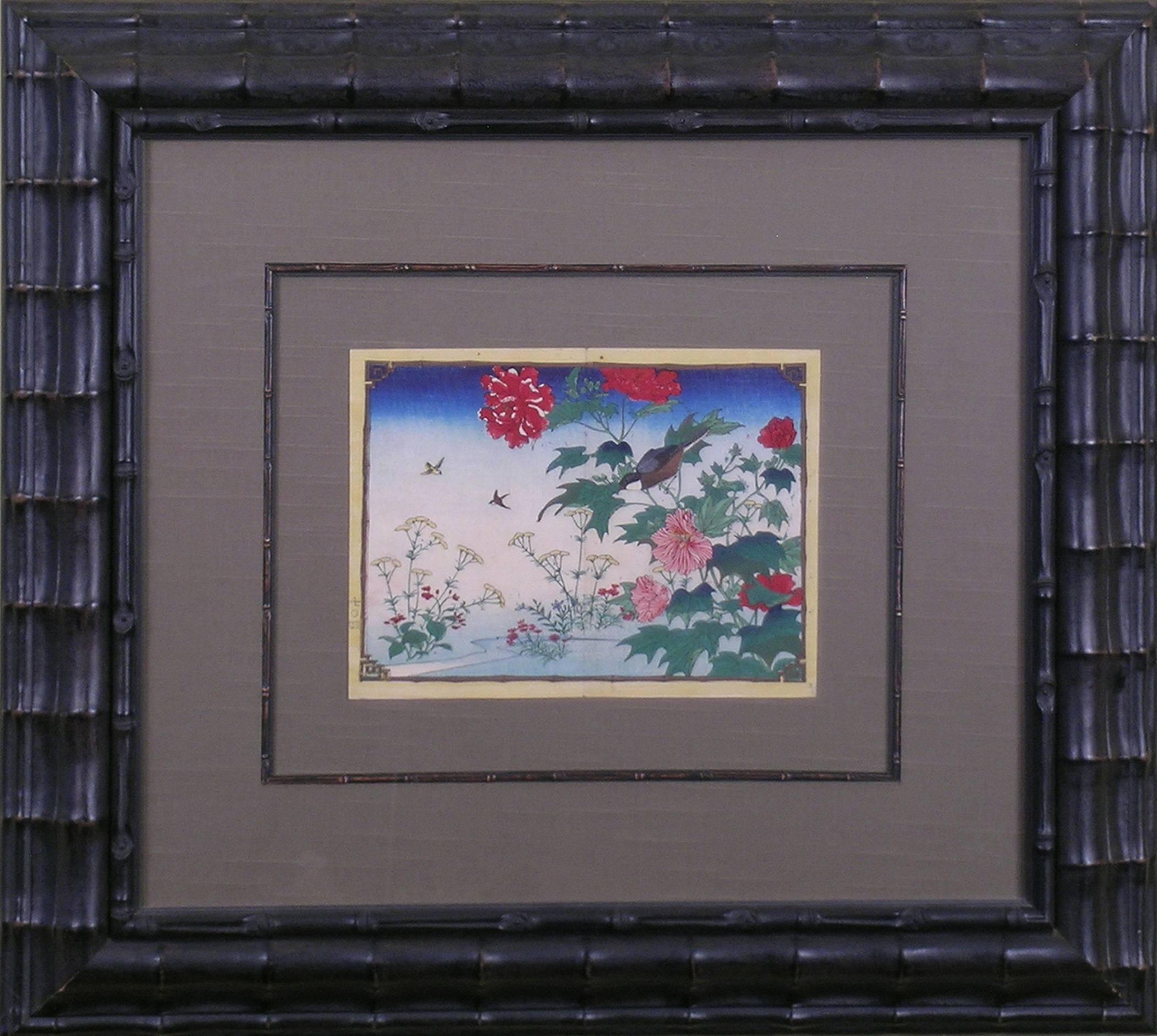Items Similar to Chrysanthemum (Copper #4)
Want more images or videos?
Request additional images or videos from the seller
1 of 7
Keika HasegawaChrysanthemum (Copper #4)1895
1895
About the Item
100 Chrysanthemums
Keika Hasegawa
Kyoto, Japan
Meji Era (ca. 1895)
Japanese Woodblock
Printed in Color with some
Touching by Hand
Paper Size:
8.25” x 12.25”
8.25” x 24.5”
Search listings for companion pieces.
Keika Hasegawa was active from 1893-1905. His most famous work is 100 Chrysanthemums, a glorious celebration of Japan’s most famous flower. As the Imperial Seal of the Emperor, the chrysanthemum gained notoriety as Japan’s favored emblem. Members of the royal family would compose seals with variations on that of the emperor. Using the Imperial Seal of the Chrysanthemum was limited to the emperor who sat on the Chrysanthemum Throne, the oldest continuing monarchy in the world. In Japan, the Order of the Chrysanthemum is the highest honor anyone can receive. It is said that the unfolding of this flower is a symbol of perfect order. Keika Hasegawa’s work is a wondrous collection of the many examples of this surprisingly varied botanical species. There is even a "Festival of Happiness" to celebrate this flower each year.
Woodblock printing flowered in the Edo Period, mid to late 19th century, and is still considered an art form of great precision and beauty. Keika Hasegawa captures both the vitality and life inherent in the chrysanthemum in each color woodblock print. Following the artist sketch, an image is carved into a block of wood. Black inks form the outline of the flower and color inks are applied to specific areas. The woodblock is then pressed to hand-made screened paper which is then hung to dry. The entire process of composing a single image can take weeks.
Keika Hasegawa chose beautiful flowers from both domestic gardens and the wild fields of Japan at the end of the 19th century. These are original antique woodblocks from an era of printing, art and design that is as ageless as the glorious chrysanthemum itself.
- Creator:Keika Hasegawa (1893 - 1905, Japanese)
- Creation Year:1895
- Dimensions:Height: 20 in (50.8 cm)Width: 17 in (43.18 cm)
- Medium:
- Movement & Style:
- Period:
- Condition:Clean, crisp image. Original hand-coloring. Framed to museum specifications using archival matting, backing, hinging. Custom design mat opening with hand-painted bevel. Glazed with ultra-violet filtering Plexiglas.
- Gallery Location:Florham Park, NJ
- Reference Number:
About the Seller
5.0
Vetted Seller
These experienced sellers undergo a comprehensive evaluation by our team of in-house experts.
1stDibs seller since 2014
164 sales on 1stDibs
Typical response time: 2 hours
- ShippingRetrieving quote...Ships From: Florham Park, NJ
- Return PolicyA return for this item may be initiated within 1 day of delivery.
More From This SellerView All
- OwlBy Kono BaireiLocated in Florham Park, NJKono Bairei (1844 – 1895) Kacho-ga. (Birds and Flowers) Japan, c1880 Woodblock Print. Okura Magobei, Publisher. The enthusiasm for nature prints transcends the centuries. “One Hundred Flowers” is a mid-nineteenth century work illustrating varieties of flowers in naturalistic styles. Traditional woodblock printing enhances the beauty of each work. The artist must carve different woodblocks for every color he wishes to transfer to paper. In this style of printing it is imperative that the register of each woodblock be exact as they must match perfectly to create an image without blurring. In addition to his illustrated flower books...Category
Late 19th Century Academic Prints and Multiples
MaterialsWoodcut, Watercolor
- Lavendar Kimono, Blue KimonoBy Matsui YuokuLocated in Florham Park, NJREISHIN GACHO (Album of Beautiful Designs) Japanese Kimono Designs Matsui Yuoku, Painter Japan, 1900 (Meiji 33) Honda Ichijirou, Publisher Woodblock Prin...Category
Early 1900s Academic Prints and Multiples
MaterialsWoodcut, Watercolor
- Dish GardenLocated in Florham Park, NJDish Garden in Blue and White China Japanese Woodblock Original Hand-color. Meji Period. Circa 1895. The enthusiasm for nature prints has spanned the centuries. By the mid-nineteenth century these works, illustrating varieties of flowers in naturalistic styles, had reached a peak of perfection. Each artistic form in traditional printing sought to enhance the beauty of botany. In the woodblock style, as it true for engravings and lithographs, it is imperative that the carving of each block be exacting as they must create an image true to that seen in nature. For many, the dish garden is a re-creation of a favorite landscape design. It provides an opportunity to build a perfect pairing of ornament...Category
Late 19th Century Academic Still-life Prints
MaterialsWoodcut, Watercolor
- The PlanLocated in Florham Park, NJSamurai Warriors Meiji 33 ( 1900) Woodblocks Original Hand-Color Woodblock printing flowered in the Edo Period in Japan, mid to late 19th century, and is still considered an art form of great precision and beauty. This style captures both the vitality and life inherent to the flower. Following the artist’s sketch, an image is carved into a block of wood to be transferred to paper in the same manner in which a painter applies his art to a canvas. Black inks form the outline of the flower and color inks are applied following nature’s guide. The woodblock is then pressed to hand-made screened paper which is then hung to dry. This lengthy process of composing a single image can take weeks. These images reflect a quality similar to watercolor and graphite resulting in a stunning and life-like portrayal. Samurai were the military nobility of medieval and early-modern Japan. According to translator William Scott Wilson...Category
Early 1900s Academic Figurative Prints
MaterialsWoodcut, Watercolor
- HawkBy Kono BaireiLocated in Florham Park, NJKono Bairei (1844 – 1895) Kacho-ga. (Birds and Flowers) Japan, c1880 Woodblock Print. 15 x 11. Okura Magobei, Publisher. The enthusiasm for nature prints transcends the centuries. “One Hundred Flowers” is a mid-nineteenth century work illustrating varieties of flowers in naturalistic styles. Traditional woodblock printing enhances the beauty of each work. The artist must carve different woodblocks for every color he wishes to transfer to paper. In this style of printing it is imperative that the register of each woodblock be exact as they must match perfectly to create an image without blurring. In addition to his illustrated flower books...Category
Late 19th Century Academic Prints and Multiples
MaterialsWoodcut, Watercolor
- Kachoga -- Flowers and BirdsLocated in Florham Park, NJJapanese Woodblocks. Meji Period. Circa 1895. The enthusiasm for nature prints has spanned the centuries. By the mid-nineteenth century these works, illustrating varieties of f...Category
Late 19th Century Academic Prints and Multiples
MaterialsWoodcut, Watercolor
You May Also Like
- Greek Architecture Blueprint of Ancient Amphitheatre Cyanotype Print, WatercolorBy Kind of CyanLocated in Barcelona, ESThis is an exclusive handprinted limited edition cyanotype. Details: + Title: Ancient Roman Amphitheater + Year: 2022 + Edition Size: 50 + Stamped and Certificate of Authenticity provided + Measurements : 70x100 cm (28x 40 in.), a standard frame size + All cyanotype prints...Category
2010s Academic Still-life Photography
MaterialsPhotographic Film, Woodcut, Emulsion, Watercolor, C Print, Color, Lithog...
- County Map of Virginia and West Virginia /// American Cartography Geography ArtLocated in Saint Augustine, FLArtist: Samuel Augustus Mitchell (American, 1790-1868) Title: "County Map of Virginia and West Virginia" (Plate 27) Portfolio: Mitchell's New General Atlas Year: 1863 Medium: Origina...Category
1860s Academic More Prints
MaterialsWatercolor, Engraving
- Bird and Beetle - Etching and watercolor (Natural History of Birds, 1741)By George EdwardsLocated in Paris, FRGeorge EDWARDS Bird and beetle ('The Gowry Bird') Original engraving, enhanced with watercolor Printed signature in the plate Dated, 1741 28.8 x 23.3 cm Created for Volume I of the...Category
1740s Academic Animal Prints
MaterialsWatercolor, Engraving
- Venice, Rialto Bridge - Original etching and watercolor, 1831By Dionisio MorettiLocated in Paris, FRDionisio MORETTI Venice, Rialto Bridge, 1831 Original etching Finely enhanced by hand with watercolor On vellum 26 x 41 cm (c. 10.2 x 16 inch) Ve...Category
1830s Academic Landscape Prints
MaterialsEtching, Watercolor
- Venice, Santa Chiara Island - Original etching and watercolor, 1831By Dionisio MorettiLocated in Paris, FRDionisio MORETTI Venice, Santa Chiara Island, 1831 Original etching Finely enhanced by hand with watercolor On vellum 26 x 41 cm (c. 10.2 x 16 inc...Category
1830s Academic Landscape Prints
MaterialsEtching, Watercolor
- Venice, View of the Grand Canal - Original etching and watercolor, 1831By Dionisio MorettiLocated in Paris, FRDionisio MORETTI View of the Grand Canal, 1831 Original etching Finely enhanced by hand with watercolor On vellum 26 x 41 cm (c. 10.2 x 16 inch) ...Category
1830s Academic Landscape Prints
MaterialsEtching, Watercolor
Recently Viewed
View AllMore Ways To Browse
Copper Flower
Copper Midcentury Art
Antique Copper Collection
Antique Copper Canner
Antique Chrysanthemum
Antique Copper Color
Antique Copper Colour
Chrysanthemums In Art
Chrysanthemum Japan
Chrysanthemum Japanese
Antique Copper Still
Copper Seal
Pressed Flowers Art
Woodblock Print Of A Beauty
Famous Japanese Woodblock Prints
Japanese Wood Block Prints
Mid Century Wood Block Print
Japanese Woodblock Beauties





